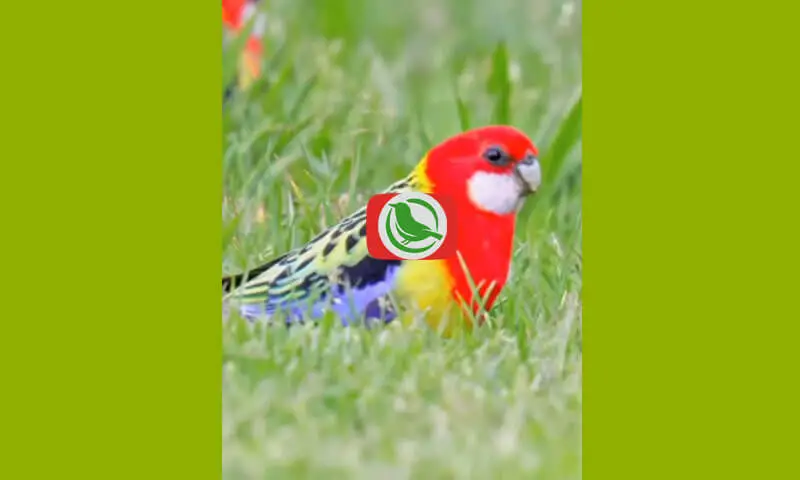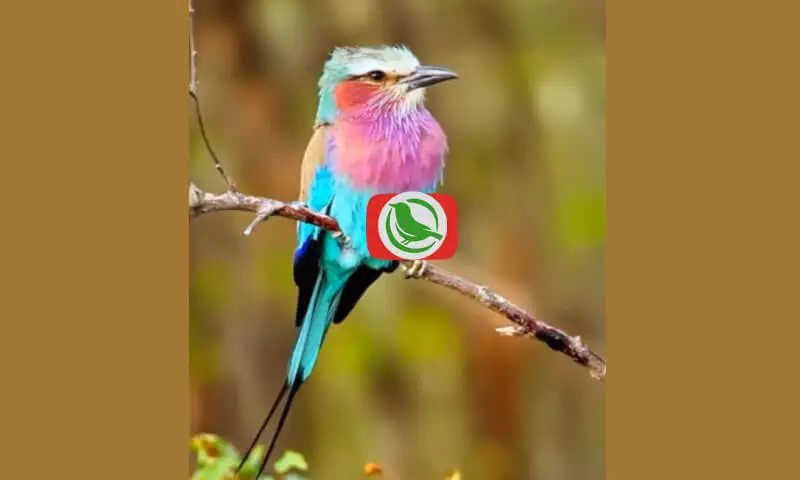The Blue-necked Tanager, known in Indonesian as Tenggara Cyanicollis, is a vibrant bird species recognized for its striking appearance and unique behavioral traits. This member of the Thraupidae family captivates birdwatchers and nature enthusiasts alike, not only because of its colorful plumage but also due to its intriguing lifestyle and ecological role.
Physical Characteristics of the Blue-necked Tanager
The Blue-necked Tanager boasts distinctive physical features that make it easily recognizable. Measuring approximately 20 cm in length, this small bird has a compact body that is well-suited for navigating through dense foliage.
Plumage
- Neck: The most striking feature of the Blue-necked Tanager is its bright blue neck, which provides a vivid contrast to the rest of its body. This coloration is not only visually appealing but may also play a role in mating displays and territorial behaviors.
- Body Coloration: The rest of the body is primarily olive green, which offers excellent camouflage among the leaves and branches of its forest habitat. The combination of bright blues and muted greens allows the bird to blend in while still standing out during displays.
- Eyes and Beak: The dark eyes of the Blue-necked Tanager enhance its exotic appearance, while its short, conical beak is perfectly adapted for its diet, allowing it to efficiently consume fruits and insects.
Sexual Dimorphism
Interestingly, both male and female Blue-necked Tanagers exhibit similar physical characteristics, though males tend to have slightly more vibrant coloration. This minimal sexual dimorphism can sometimes make it challenging to differentiate between the genders in the wild.
Natural Habitat of the Blue-necked Tanager
The Blue-necked Tanager thrives in tropical environments, primarily found throughout various regions of Indonesia. Its preferred habitats include:
Altitude and Vegetation
- Elevation: This bird is typically found at elevations ranging from 1,000 to 2,000 meters above sea level. The cooler temperatures and higher humidity at these altitudes create an ideal environment for the species.
- Forest Type: Blue-necked Tanagers inhabit lush tropical forests and fertile mountainous regions. They prefer areas with dense canopies and rich undergrowth, which provide ample food sources and shelter from predators.
Social Structure
In the wild, Blue-necked Tanagers are often observed in small flocks, typically consisting of 5 to 15 individuals. These social structures are beneficial for foraging, as they can work together to locate food sources, warn each other of potential threats, and engage in social interactions.
Diet and Feeding Habits of the Blue-necked Tanager
The Blue-necked Tanager is an omnivore, with a diet that is diverse and adaptable:
Primary Food Sources
- Fruits: The bulk of the Blue-necked Tanager’s diet consists of tropical fruits, such as bananas, guavas, and various berries. This preference for fruit is significant, as it helps with seed dispersal in their habitat, playing a crucial role in forest regeneration.
- Insects and Larvae: In addition to fruits, these birds also consume insects and larvae, which provide essential protein for their growth and reproduction.
Foraging Behavior
The Blue-necked Tanager employs various foraging techniques to maximize its food intake. They are agile flyers, often seen flitting between branches and utilizing their sharp beaks to peck at fruits or capture insects. Their foraging behavior is characterized by:
- Tree Canopies: They are frequently found in the upper layers of the forest canopy, where they search for ripe fruits and insects.
- Ground Foraging: Occasionally, they may descend to the forest floor to forage for fallen fruits or to catch insects among the leaf litter.
Behavior and Social Life
The Blue-necked Tanager is known for its sociable nature and melodious calls, which contribute to its captivating presence in the forest.
Vocalizations
These birds are vocal communicators, using a range of soft yet sharp calls to communicate with flock members. Their songs are often described as melodious and can vary in pitch and rhythm, serving purposes such as:
- Mating Calls: Males may sing to attract females during the breeding season.
- Alarm Calls: The flock uses specific calls to alert each other of potential dangers, such as predators.
Territorial Behavior
While generally social, Blue-necked Tanagers can exhibit territorial behavior, particularly during the breeding season. Males may engage in displays of strength, showcasing their bright plumage and vocalizing to establish dominance and attract mates.
Conservation of the Blue-necked Tanager (Tenggara Cyanicollis)
As with many species, the Blue-necked Tanager faces challenges due to habitat loss and environmental changes.
Threats to Survival
- Deforestation: The primary threat to the Blue-necked Tanager is deforestation, driven by agricultural expansion, logging, and urban development. The destruction of their tropical forest habitat significantly impacts their population and breeding success.
- Climate Change: Climate change poses additional risks, altering weather patterns and potentially disrupting the availability of food sources. Changes in temperature and precipitation can affect the fruiting cycles of plants, which in turn affects the food supply for these birds.
Conservation Efforts
Conservation initiatives are crucial to safeguarding the future of the Blue-necked Tanager.
- Protected Areas: Various environmental organizations and the Indonesian government have established protected forest areas, ensuring that these birds have a safe habitat to thrive.
- Community Education: Educating local communities about the importance of biodiversity and the role of the Blue-necked Tanager in the ecosystem is vital. Community involvement in conservation efforts can lead to more sustainable practices that benefit both wildlife and human populations.
Breeding and Rehabilitation Programs
In addition to protecting their natural habitat, several organizations are involved in breeding and rehabilitation programs aimed at ensuring the survival of the Blue-necked Tanager.
Captive Breeding
Captive breeding programs work to increase the population of Blue-necked Tanagers by breeding them in controlled environments. These programs focus on:
- Genetic Diversity: Maintaining a diverse gene pool to ensure healthy populations.
- Reintroduction: After successful breeding and population recovery, efforts are made to reintroduce these birds into their natural habitats, ensuring their continued existence in the wild.
Conclusion
The Blue-necked Tanager (Tenggara Cyanicollis) is a remarkable tropical bird that showcases unique physical traits and engaging behaviors. Understanding its habitat, diet, and social structure is essential for effective conservation efforts. By promoting habitat preservation and community involvement, we can work to ensure that this stunning species continues to thrive in its natural environment.
With a deeper understanding of the Blue-necked Tanager, we can actively participate in protecting one of the most extraordinary tropical bird species, contributing to the overall health of the ecosystems they inhabit. The beauty and diversity of these birds remind us of the importance of preserving our natural world for future generations.





